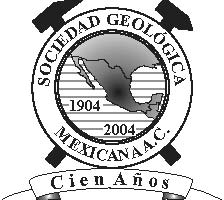|
BOLETÍN DE LA SOCIEDAD GEOLÓGICA MEXICANA VOL. 59, NÚM:. 1, 2007, p. 101-113 http://dx.doi.org/10.18268/BSGM2007v59n1a8 |
 |
Obtención del relieve digital mediante proyecciónde luz estructurada en modelosanalógicos de extensión
Mariano Cerca1,*, Bernardino Barrientos-García2, Jorge García-Márquez2, Caridad Hernández-Bernal3
1 Centro de Geociencias, Universidad Nacional Autónoma de México, Campus Juriquilla, CP 76230, Juriquilla, Querétaro, México.
2 Centro de Investigaciones en Óptica, A. C., Loma del Bosque 115, Apdo. Postal 1-948. C.P. 37000, León, México.
3 Instituto de Geología, Universidad Nacional Autónoma de México, Ciudad Universitaria, 04510. México, D.F.
* This email address is being protected from spambots. You need JavaScript enabled to view it.
Abstract
We present the results of using a projected structured light technique to obtain a digital topographic map in analogue models of deformation during extension. The analogue models simulate extensional processes occurring in the uppermost part of the earth crust. The technique to obtain the relief consists in the projection of a structured light (binary fringes produced by light and shadows) on the surface of the model. The model is deformed and a digital photograph of the surface is obtained for each deformation increment. The deformation apparatus is squeeze-box type and consists of a Plexiglas box in which models are constructed using materials that simulate the mechanical behavior of the earth crust. A vertical moving wall is displaced within the box at a constant and low velocity allowing the extension of the model. The optical array was constructed in Centro de Investigaciones en Óptica. Results obtained illustrate the convenience of the optical techniques to analyze the surface deformation on the physical experiments.
Keywords: analogue models, extension, mechanical stratification, structured light, fringe projection, relief, image analysis.

